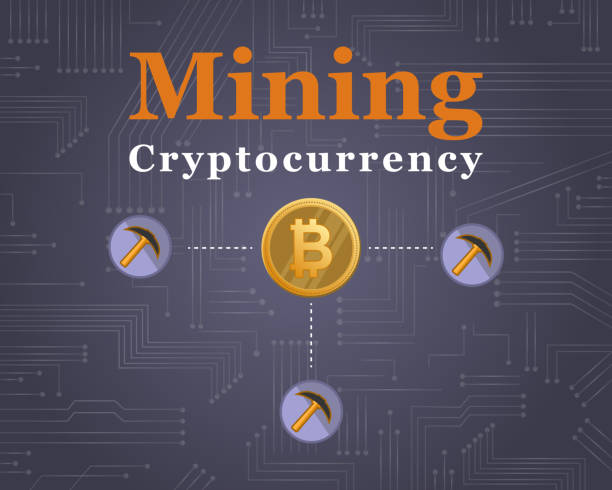Demystifying Ethereum: The Blockchain Powerhouse Beyond Bitcoin
Bitcoin, the first and most well-known cryptocurrency, captured the world's attention with its promise of a decentralized financial system. However, Ethereum, launched in 2015 by Vitalik Buterin, emerged as a more versatile platform with the potential to revolutionize not just finance, but also various other sectors.
This article delves into the intricate world of Ethereum, exploring its core functionalities, technological underpinnings, and the vast ecosystem it fosters. We'll unpack the differences between Ethereum and Bitcoin, delve into the concept of smart contracts, and explore the exciting possibilities Ethereum presents for the future.

Beyond Currency: Understanding the Ethereum Blockchain
Unlike Bitcoin, which is primarily designed as a digital currency, Ethereum is a programmable blockchain. It functions as a decentralized platform that allows developers to build and deploy applications, also known as decentralized applications (dApps). These dApps operate on a peer-to-peer network, eliminating the need for central authorities and intermediaries.
Here's a breakdown of Ethereum's key features:
- Smart Contracts: These are self-executing contracts with pre-programmed terms and conditions. Once deployed on the blockchain, they operate autonomously without the possibility of alteration or censorship. Smart contracts form the backbone of dApps, enabling secure and transparent transactions and interactions.
- Ether (ETH): The native cryptocurrency of the Ethereum network. It serves two primary functions:
- Fueling Transactions: Users pay transaction fees in ETH to compensate miners for their computational power used in validating transactions.
- Utility Token: ETH can be used within dApps to access services, participate in governance, and interact with other functionalities.
- Ethereum Virtual Machine (EVM): This virtual machine acts as a decentralized computer that executes smart contracts. The EVM ensures that all nodes on the network run the same code, guaranteeing consistency and security.
How Does Ethereum Work? A Look Under the Hood
Ethereum, like Bitcoin, utilizes a proof-of-work (PoW) consensus mechanism. Miners compete to solve complex cryptographic puzzles, and the successful miner validates the next block of transactions on the blockchain. This process secures the network and prevents fraudulent activity.
However, Ethereum is actively transitioning to a more energy-efficient consensus mechanism called proof-of-stake (PoS). In PoS, validators stake their ETH tokens to secure the network. The probability of a validator being selected to validate a block depends on the amount of ETH they have staked. This shift aims to reduce the network's energy consumption significantly.
A World of Possibilities: Exploring the Ethereum Ecosystem
The programmability of Ethereum unlocks a vast range of applications beyond just cryptocurrencies. Here are some key areas where Ethereum is making waves:
- Decentralized Finance (DeFi): DeFi protocols aim to replicate traditional financial services like lending, borrowing, and trading, but in a decentralized and transparent manner. Users can access these services without relying on banks or other financial institutions.
- Non-Fungible Tokens (NFTs): NFTs are unique digital assets that represent ownership of digital or real-world items. Ethereum is a prominent platform for creating and trading NFTs, enabling artists, creators, and collectors to interact in a new way.
- Supply Chain Management: Blockchain technology can track the movement of goods throughout a supply chain, ensuring transparency and reducing fraud. Ethereum-based dApps can enhance supply chain efficiency and visibility for businesses.
- Decentralized Autonomous Organizations (DAOs): DAOs are community-driven organizations governed by smart contracts. Members hold voting rights based on their token ownership, enabling collective decision-making without a central authority.
This is just a glimpse into the ever-expanding Ethereum ecosystem. Developers are constantly innovating and creating new dApps with the potential to disrupt various industries.
The Road Ahead: Challenges and Opportunities for Ethereum
Despite its potential, Ethereum faces some challenges that need to be addressed for widespread adoption:
- Scalability: The current PoW consensus mechanism limits the number of transactions Ethereum can process per second, leading to network congestion and high transaction fees. Scaling solutions like sharding are under development to address this issue.
- Security: While Ethereum is secure, smart contract vulnerabilities can lead to hacks and exploits, as seen in several high-profile incidents. Continuous audits and security best practices are crucial.
- Regulation: The regulatory landscape surrounding cryptocurrency is still evolving. Unclear regulations can create uncertainty for businesses and developers building on the Ethereum platform.
However, Ethereum also presents immense opportunities for the future:
- Open Finance: DeFi protocols on Ethereum have the potential to democratize access to financial services, particularly for the underbanked population around the globe.
- Web3: Ethereum is a key player in the development of Web3, a decentralized version of the internet where users control their data and online interactions.
- Sustainability: The transition to PoS will significantly reduce Ethereum's energy consumption, making it a more environmentally friendly option.
- Interoperability: Efforts are underway to enable seamless interaction between Ethereum and other blockchains, fostering a more interconnected and collaborative blockchain ecosystem.
The Future of Ethereum: A Collaborative Endeavor
The success of Ethereum hinges on a collaborative effort from developers, users, and businesses. Continuous innovation, security enhancements, and open dialogue with regulatory bodies are essential for Ethereum to reach its full potential.
Here are some key trends to watch in the future of Ethereum:
- Layer-2 Scaling Solutions: These solutions aim to process transactions off the main Ethereum chain and then settle them on the main chain, improving scalability and reducing fees.
- Decentralized Governance: Ethereum's governance model allows token holders to vote on proposed changes to the protocol, fostering a more community-driven approach.
- Enterprise Adoption: As businesses explore the potential of blockchain technology, Ethereum presents a robust platform for developing secure and transparent applications.
Ethereum's journey has just begun, and its impact on various industries is yet to be fully realized. By addressing its challenges and capitalizing on its opportunities, Ethereum has the potential to reshape the landscape of finance, technology, and beyond.
The world of blockchain is constantly evolving, and Ethereum remains at the forefront of innovation. As a programmable blockchain platform, it empowers developers to build a future where transparency, security, and user control are paramount. Whether you're a developer, investor, or simply curious about the future of technology, Ethereum's journey is definitely worth following.
































